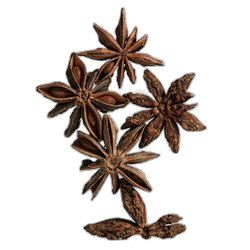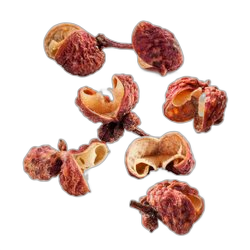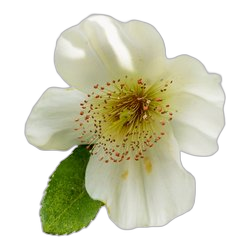spicy
Sichuan Pepper
Sichuan pepper, also known as Szechuan pepper or Chinese coriander, is not actually a pepper but a spice derived from several species of the Zanthoxylum genus, particularly Zanthoxylum simulans and Zanthoxylum bungeanum. It is an integral part of Chinese cuisine, especially in Sichuan province's culinary traditions.
The pods from the prickly ash tree are harvested and dried, but it’s the husks that surround the seeds which are used as the spice, not the seeds themselves. These husks are then either used whole or ground into powder.
Sichuan pepper is famed for its unique aroma and flavoring characteristics. Unlike black or white pepper, Sichuan pepper does not produce a spicy heat but is known for its numbing sensation on the tongue, often described as tingling or buzzing. This effect is due to the presence of hydroxy-alpha sanshool in the pepper.
Scent-wise, Sichuan pepper is complex. It exhibits lemony, citrus notes that intermingle with earthy, woody undertones. Some might also detect slight floral and herbal nuances. This aromatic profile makes it a popular ingredient not only in savory dishes but also in desserts and even beverages that capitalize on its distinctive aroma and flavor.
This unique blend of sensory experiences—both tactile and aromatic—makes Sichuan pepper a standout in spice collections, essential for authentic Sichuan cooking, and an intriguing addition to various culinary experiments.
Like this smell?
Discover your fragrance match by taking our quiz and exploring scents tailored to your taste.
Top fragrances using this Note














